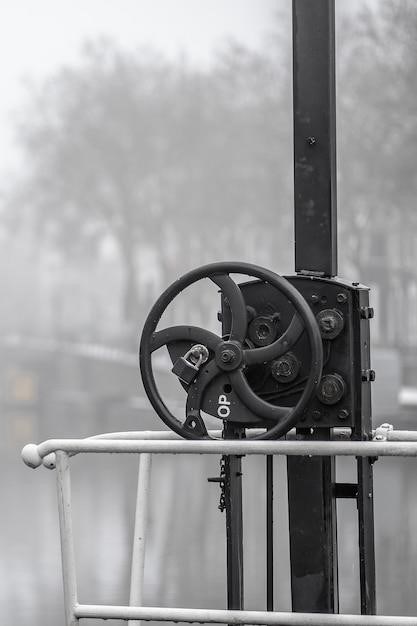Life in the Iron Mills⁚ A Glimpse into Industrial America
Rebecca Harding Davis’s novella, “Life in the Iron Mills,” offers a stark and poignant glimpse into the harsh realities of industrial America during the 19th century. The story follows the lives of working-class individuals trapped in a brutal cycle of poverty and despair, highlighting the social and economic injustices prevalent in the burgeoning industrial landscape. The novella’s vivid depiction of the grimy, smoke-filled iron mills and the bleak lives of its inhabitants paints a powerful picture of the human cost of industrialization, leaving a lasting impact on readers even today.
The Setting and Narrative Voice
“Life in the Iron Mills” is set in an unnamed industrial town in the American South, a place dominated by the relentless churn of iron production. The narrator, an unnamed resident, observes the scene from a window, providing a detached yet insightful perspective on the town’s grim realities. This detached voice allows the reader to experience the oppressive atmosphere of the town, its pervasive smoke, and the weary lives of its inhabitants. The narrator’s observation of drunken workers, the sluggish river, and the workers’ grim faces paints a stark picture of the town’s atmosphere, where the relentless rhythm of the mills and the constant presence of smoke create a suffocating environment. The narrator’s voice, though detached, is imbued with a sense of empathy, as the observer recognizes the hardships faced by the workers and the limitations of their lives. The setting, with its bleakness and suffocating atmosphere, becomes a crucial element in conveying the novella’s themes of poverty, despair, and the yearning for beauty in a harsh reality;
Hugh Wolfe⁚ A Furnace Tender’s Struggle
Hugh Wolfe, a furnace tender in one of the iron mills, embodies the plight of the working class in “Life in the Iron Mills.” He is a skilled craftsman, capable of molding intricate figures from the waste product of iron production, known as korl. However, his talent remains stifled by his harsh circumstances. Hugh’s life is consumed by backbreaking labor, leaving him physically and emotionally exhausted. He yearns for a life beyond the confines of the mills, a life filled with beauty and meaning. This yearning is reflected in his artistic endeavors, where he seeks solace and expression through his korl sculptures. Hugh’s struggle is not only against the oppressive conditions of the mills but also against the societal limitations imposed on him. He yearns for a better existence, a life where his talents are recognized and appreciated, but his aspirations are constantly thwarted by the realities of his social class. Hugh’s story serves as a powerful critique of the social inequalities inherent in industrial society, highlighting the inherent injustices faced by those trapped in the cycle of poverty and labor.
Deborah⁚ A Hunchbacked Picker’s Sacrifice
Deborah, Hugh Wolfe’s cousin, is a poignant figure in “Life in the Iron Mills.” She is a hunchbacked picker in the cotton mills, burdened by physical deformity and the harsh realities of her working-class existence. Despite her own struggles, Deborah exhibits remarkable strength and compassion, sacrificing her own well-being to care for Hugh and their family. She represents the resilience and selflessness often found in those who endure hardship. Deborah’s hunchback is a constant reminder of the physical and social limitations imposed on her, yet she endures with quiet dignity. Her love for Hugh is unwavering, and she strives to provide him with comfort and support amidst the bleakness of their lives. Deborah’s character serves as a poignant testament to the enduring spirit of human kindness and the sacrifices made by those who are often marginalized and overlooked.
Themes of Poverty and Despair

Poverty and despair are pervasive themes in “Life in the Iron Mills,” serving as a stark backdrop for the characters’ struggles. The novella vividly portrays the harsh realities of working-class life in the industrial era. The characters are trapped in a cycle of poverty, their lives defined by relentless labor and deprivation. The iron mills themselves are symbolic of this oppressive system, with their grimy, smoke-filled atmosphere and the constant threat of injury and death. The characters are burdened by a sense of hopelessness, their dreams and aspirations stifled by the unrelenting demands of their work and the lack of opportunity. This pervasive sense of despair is further emphasized by the characters’ isolation and alienation, as they are trapped in a society that seems indifferent to their plight. Davis’s portrayal of poverty and despair serves as a powerful indictment of the social and economic inequalities prevalent in industrial America.
The Yearning for Beauty and Art
Despite the grim realities of their existence, the characters in “Life in the Iron Mills” possess a deep yearning for beauty and art. This yearning serves as a counterpoint to the ugliness and despair of their surroundings. Hugh Wolfe, the protagonist, finds solace and expression through his art, carving figures from the korl, a waste product of iron production. His sculptures, though crude, represent a yearning for something greater, a desire to transcend the limitations of his life. Deborah, Hugh’s cousin, also exhibits a longing for beauty, finding solace in the simple act of singing. The characters’ yearning for beauty and art highlights the human need for meaning and expression, even in the face of crushing adversity. It suggests that the human spirit can find beauty and inspiration even in the most bleak of circumstances. Through these characters, Davis explores the power of art to offer hope and solace in a world dominated by industrialization and its accompanying social ills.
Hugh’s Tragic Choice and its Implications
The climax of “Life in the Iron Mills” revolves around Hugh’s tragic choice. Faced with a bleak future and driven by despair, he steals a small sum of money and is subsequently imprisoned. His imprisonment symbolizes the stifling nature of the industrial society he inhabits, where opportunities for advancement are limited and the consequences for even minor transgressions are severe. Hugh’s tragic choice, ultimately leading to his incarceration, reflects the broader struggles of the working class, who are often trapped in a cycle of poverty and despair, with few avenues for escape. The novella leaves a lasting impression by portraying the destructive consequences of societal inequality and the crushing weight of hopelessness experienced by those on the margins.
Social Commentary and the Industrial Revolution
“Life in the Iron Mills” serves as a powerful social commentary on the rapidly changing landscape of America during the Industrial Revolution. Davis’s novella exposes the dark underbelly of industrial progress, highlighting the exploitation of workers, the degradation of the environment, and the widening gap between the wealthy and the poor. The story critiques the social and economic structures that perpetuate poverty and despair, questioning the moral implications of unchecked industrial growth. Through vivid descriptions of the squalid living conditions, the grueling work schedules, and the sense of hopelessness that pervades the lives of the mill workers, Davis compels readers to confront the human cost of industrialization and the need for social reform. The novella’s enduring relevance lies in its timeless critique of the consequences of unchecked industrial expansion and its call for a more just and equitable society.
The Power of Realism in “Life in the Iron Mills”
“Life in the Iron Mills” stands as a seminal work of American realism, a literary movement that sought to depict everyday life with unflinching honesty and a focus on the experiences of ordinary people. Davis’s novella embodies the tenets of realism through its gritty portrayal of the working class, its unflinching depiction of poverty and hardship, and its avoidance of sentimentality or romanticization. The story’s setting, the grimy and oppressive iron mills, becomes a symbol of the industrial age’s harsh realities, while the characters’ struggles and frustrations reflect the lived experiences of those caught in the gears of industrial progress. By grounding her narrative in the concrete details of daily life, Davis creates a powerful and enduring portrait of a specific time and place, making “Life in the Iron Mills” a vital document of American social history.
Rebecca Harding Davis⁚ A Pioneer of American Realism
Rebecca Harding Davis, the author of “Life in the Iron Mills,” is considered a pioneering figure in the development of American realism. Her work challenged the prevailing romanticism of the time, which often idealized rural life and ignored the harsh realities of urban industrialization. Davis, through her unflinching portrayal of the working class and the grim conditions of the iron mills, brought a new level of social consciousness to American literature. Her willingness to confront the injustices and struggles of the working class made her a forerunner of later realist writers like Theodore Dreiser and Upton Sinclair, who would continue to expose the dark underbelly of American society. Davis’s legacy lies in her contribution to a literary movement that sought to depict life as it truly was, without sentimentality or sugarcoating, paving the way for a more realistic and socially conscious American literature.
The Lasting Legacy of “Life in the Iron Mills”
Despite its initial rejection by some critics, “Life in the Iron Mills” has endured as a powerful and enduring literary work. Its unflinching portrayal of the harsh realities of industrial life continues to resonate with readers today, prompting reflection on the social and economic inequalities that persist. The novella’s themes of poverty, despair, and the yearning for beauty and art remain relevant, serving as a reminder of the human cost of industrialization and the importance of social justice. “Life in the Iron Mills” has inspired generations of writers and artists, influencing their own explorations of social issues and the human condition. Its impact extends beyond the literary realm, serving as a testament to the power of art to expose injustice and spark social change. The novella’s enduring legacy lies in its ability to spark dialogue and provoke critical thinking about the challenges facing humanity in an increasingly industrialized world.
Availability and Access to the Text
“Life in the Iron Mills” remains widely accessible to readers today, thanks to its inclusion in various formats and platforms. The novella is readily available in digital form through online libraries such as Project Gutenberg, where it can be downloaded for free in formats like EPUB and PDF. Numerous online retailers, including Amazon, also offer both physical and digital copies of the novella. Many universities and libraries maintain physical copies of the text, making it accessible for research and study. Furthermore, “Life in the Iron Mills” is frequently included in anthologies of American literature, ensuring its continued presence in educational settings. The availability of the text in multiple formats and platforms allows for a wide audience to engage with this important work of American realism, ensuring its lasting legacy.
